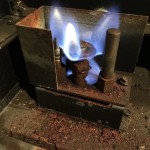Removing a Stone Fireplace Facade: A Comprehensive Guide
Fireplaces, with their inviting warmth and ambiance, are a cherished feature in many homes. However, the facade of a stone fireplace, while aesthetically pleasing, can sometimes become outdated or simply not fit the desired aesthetic of a renovated space. Removing a stone fireplace facade presents a unique set of challenges, requiring careful planning and execution. This article provides a comprehensive guide to removing a stone fireplace facade, outlining the process, potential challenges, and essential safety considerations.
Assessing the Structure and Material
Before embarking on the removal process, a thorough assessment of the fireplace structure and the stone facade is crucial. This step involves understanding the following:
- Type of Stone: Different types of stone have varying levels of durability and require specific removal techniques. Common fireplace stones include brick, limestone, sandstone, granite, and marble, each with its own characteristics.
- Mortar Strength: The strength of the mortar holding the stones together will impact the difficulty of removal. Older mortar may be weaker and easier to break, while newer mortar can be quite strong.
- Structural Integrity: The fireplace itself must be structurally sound to withstand the removal process. If the fireplace is weakened or compromised, additional support may be necessary.
- Presence of a Firebox: If the stone facade is covering a functional firebox, the removal process must ensure the firebox remains intact and operational.
A thorough assessment will allow for a tailored approach to removal, minimizing damage and ensuring safety.
Preparing for Removal
Once the assessment is complete, the next step involves preparation for the removal process. This includes:
- Protecting Surrounding Areas: Cover adjacent surfaces, floors, and furniture with drop cloths or plastic sheeting to prevent dust and debris from spreading.
- Disconnecting Utilities: If the fireplace is connected to any utilities, such as gas lines or electrical wiring, disconnect them safely before proceeding with removal.
- Securing Tools and Equipment: Gather the necessary tools, including a hammer, chisel, pry bar, safety glasses, gloves, and a dust mask. Consider using a reciprocating saw with a masonry blade for faster removal.
- Proper Ventilation: Ensure adequate ventilation to prevent the buildup of dust and fumes during the removal process. Open windows and doors or use a fan.
By taking these preparatory steps, you can create a safer and more controlled environment for the removal project.
Removal Techniques
The specific removal technique will vary depending on the type of stone and the strength of the mortar. Here are two common methods:
Chiseling and Pry Bar Method
This traditional method involves using a hammer and chisel to break the mortar bonds between the stones. A pry bar can then be used to gently lever the stones away from the fireplace structure. This method is effective for removing individual stones but can be time-consuming and labor-intensive.
Reciprocating Saw Method
For faster removal, a reciprocating saw with a masonry blade can be used to cut through the mortar and stone. This method requires caution to avoid damaging the underlying structure and to ensure proper ventilation due to dust generation.
Regardless of the chosen method, it is crucial to work systematically, starting from the top and working your way down. Remove the stones one by one, carefully detaching them from the mortar and the fireplace structure. Be sure to dispose of the removed stones and mortar responsibly, taking care not to create any debris hazards.
Safety Considerations
Removing a stone fireplace facade involves inherent risks, and safety must be paramount. Here are some essential considerations:
- Wear Protective Gear: Always wear safety glasses, gloves, and a dust mask to protect your eyes, hands, and respiratory system from flying debris and dust.
- Use Proper Tools: Employ tools that are in good working condition and appropriate for the task. Regularly inspect tools for wear and tear.
- Avoid Overexertion: Take breaks to prevent fatigue, as this can lead to accidents. Lifting heavy stones should be done with proper lifting techniques to avoid strain or injuries.
- Work Under Supervision: If possible, have a second person present for assistance and to ensure safety measures are being followed.
By prioritizing safety, you can minimize the risk of injuries and ensure a successful removal process.
Post-Removal Steps
Once the stone facade has been removed, there are a few essential post-removal steps:
- Clean Up: Thoroughly clean the area, removing any debris and dust. This may involve sweeping, vacuuming, and using a damp cloth to remove residue.
- Inspect for Damage: Examine the fireplace structure for any damage caused during the removal process. Repair any cracks or imperfections as needed.
- Prepare for New Finish: If planning to replace the stone facade with a different finish, prepare the surface by smoothing any rough edges and ensuring proper adhesion for the new material.
By following these steps, you can ensure a clean and prepared surface for the next phase of your fireplace renovation project.

Milwaee Fireplace Demolition At The Lookout Project In Brookfield Wi

Demolish And Rebuild A Fireplace Pt1 Time Lapse

Whats Behind My Rock Fireplace How Do I Remove It Hometalk

I Can T Stand My Ugly Stone Fireplace What Do Laurel Home
How To Remove A Granite Stone Mantel Our Fireplace Four Generations One Roof Blog

Ugly Fake Stone Removal

How To Remove A Granite Stone Mantel Our Fireplace Four Generations One Roof Blog

How To Remove A Granite Stone Mantel Our Fireplace Four Generations One Roof Blog

Removing Stone Mantel Shelf

Stone Fireplace Facade Removal Guide Doityourself Com
Related Posts








